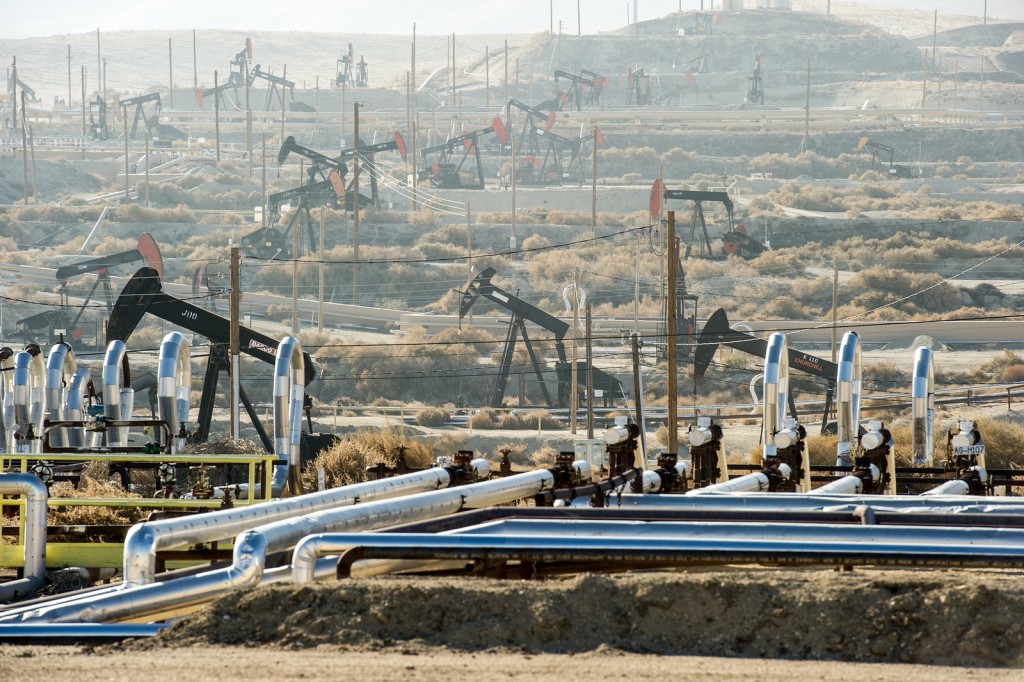Over the course of the last several weeks, we’ve spent quite a bit of time sounding the alarm bells on America’s growing list of bankrupt oil and gas drillers.
We’ve also been keen to point out that the long list of cash flow negative US producers has only managed to stay in business this long because Wall Street has thus far been willing to plug the sector’s funding gap with cheap financing thanks to ZIRP and investors’ insatiable demand for anything that looks like it might offer some semblance of yield.
It is not a matter of “if” but rather a matter of “when” the entire complex goes under and when that happens, the relatively paltry sums banks have set aside against losses in their energy books will balloon as everyone on Wall Street simultaneously pulls a BOK Financial.

Indeed, we’re already hearing the not-so-distant rumblings of this oncoming default freight train as JP Morgan raises its net loan loss reserves for the first time in 22 quarters, Wells Fargo discloses $17 billion in “mostly” junk energy exposure, and Citi dodges questions about the reserves it’s holding against a $58 billion energy book that the bank may or may not be marking to market depending on what the Dallas Fed “didn’t” tell banks earlier this month.
M2M or no, higher provisions or not, the end of America’s oil “miracle” is coming and there’s nothing Wall Street can do to stop it. At this point in the game, no one is going to finance these companies’ cash flow deficits and the fundamentals in the oil market are laughably bad. Storage is overflowing, demand is withering, and supply is, well, “drowning” us all, to quote the IEA.
As Bloomberg reports, Wall Street is about to have a serious bout of “indigestion” because recent auctions suggest that “some bankrupt oil and gas drillers can’t give their assets away.”
Bloomberg tells the story of Terry Clark, who “couldn’t be happier” about lower for longer crude.
Clark got the last laugh on Dune Energy whose assets his White Marlin Oil & Gas picked up at a “deep discount” at auction. A year earlier, Dune turned down Clark’s offer to acquire the assets when crude was $100 barrel.
Here’s more on the growing list of bankrupt US oil and gas producers including a bit on American Eagle Energy which, you’re reminded, pulled a Movie Gallery last March by defaulting before making a single interest payment:
Winners and losers are emerging from the energy bust. What’s a meal for Clark is indigestion for banks that financed the boom using oil and gas properties as collateral. The four biggest U.S. banks — Bank of America Corp., Citigroup Inc., JPMorgan Chase & Co. and Wells Fargo & Co. — have set aside at least $2.5 billion combined to cover souring energy loans and have said they’ll add to that if prices stay low.
There’s plenty to keep Clark bargain-hunting. Last year, 42 U.S. energy companies went bankrupt, owing more than $17 billion, according to a report from law firm Haynes & Boone.
Dune went belly up owing $144.2 million. Its assets sold for $20 million. In May, American Eagle Energy Corp. filed for bankruptcy with debts of $215 million. Its properties sold for $45 million in October. BPZ Resources Inc. owed $275.2 million. Its assets fetched about $9 million.
Endeavour International Corp. went into bankruptcy owing $1.63 billion. The company sold some assets for $9.65 million and handed over the rest to lenders. ERG Resources LLC opened an auction with a minimum bid of $250 million. Response? No takers. Samson Resources Corp. filed for bankruptcy in September, listing $4.2 billion in debt.
With its optimistic ticker AMZG — earlier incarnations were named Golden Hope Energy and Eternal Energy — American Eagle is classic shale.
The last few years, the company took advantage of low interest rates and high oil prices, outspending its income and relying on debt to keep drilling. Now the company is part of the bust, selling off acreage for less than it owed its bondholders.
Bankruptcies are accelerating. Magnum Hunter Resources Corp., Swift Energy Co. and New Gulf Resources filed in December. With more liquidations hitting the market, bargain hunters may not be willing to pay top dollar when there are so many deals to be found.
So in short: the bankruptcies are piling up and the assets securing the sector’s financing are essentially worthless now that crude is basically free.
Got it.
But banks and lenders needn’t be concerned. After all, America’s long list of cash flow negative producers are “only” sitting on $325 billion in debt.

Overheard at many a closed-door meeting in lower Manhattan: “We’re gonna need a bigger reserve”…











